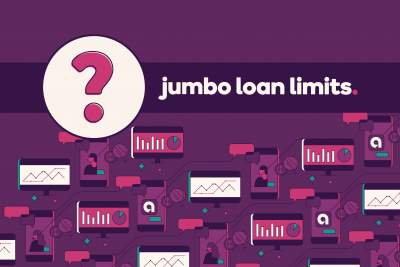
Mortgages aren’t one-size-fits-all. For instance, a jumbo loan could fit you like a glove if you’re buying a more expensive home and need to borrow more than the conforming loan limits allow. So, if you’re looking at an upscale property or simply one in an area of the country where the cost of living is high, here’s what you need to know about the jumbo loan limits for 2020.
Jumbo loans exceed maximum conforming loan limits, which the Federal Housing Financing Agency (or FHFA) sets based on Federal National Mortgage Association (Fannie Mae) and Federal Home Loan Mortgage Corporation (Freddie Mac) guidelines. Most parts of the country have one maximum loan amount for conforming loans. In some high-cost areas, such as Washington D.C. and certain California counties, the threshold for the maximum conforming loan is raised.
Jumbo Loan Limit 2020: Minimum and Maximum Loan Amounts
For 2020, the Federal Housing Finance Agency raised the maximum conforming loan limit for a single-family property from $484,350 to $510,400. In high-cost areas, the ceiling for conforming mortgage limits is $765,600 for 2020. See the 2020 maximum conforming loan limits across the U.S. on this map.
Those limits apply to conforming loans that follow Fannie Mae or Freddie Mac guidelines. A different loan limit kicks in if you’re buying a home in 2020 using an FHA loan, which is backed by the Federal Housing Administration. For 2020, the FHA loan limit is $331,760. But the same $765,600 maximum loan limit still applies for approximately 70 high-cost counties.
Essentially, that makes any mortgage that exceeds those baseline amounts a jumbo loan in 2020. If you’re wondering whether there’s a difference between getting a conventional jumbo loan versus an FHA jumbo loan, there are a couple of things that set the two apart.
Jumbo Loans vs. Jumbo FHA Loans
The biggest difference between jumbo loans and jumbo FHA loans might be the down payment requirement. With a jumbo FHA loan, only a 3.5% down payment is required in an effort to make homeownership more accessible to more people, (but you can’t get outside assistance with your down payment).
If you’re getting a jumbo mortgage, you might have to put a little more down. Ally Home, for example, allows qualified buyers to get a jumbo loan with a down payment as low as 10%. With either type of jumbo mortgage, you’ll still have to budget 2 to 5 percent of the purchase price for closing costs.
A jumbo FHA loan might also be easier to qualify for, in terms of credit requirements. Whereas you might be able to get an FHA jumbo mortgage with a credit score of 600 or better, a conventional jumbo mortgage lender might expect a score of 700 or better instead.
Is a jumbo loan right for you?
Now that you know what the jumbo loan limits are for 2020, you can weigh whether it’s your best choice for a mortgage. To recap, a jumbo loan is usually better suited to a buyer who needs to borrow more than the conforming loan limits allow, has good, steady income to afford the higher monthly payments associated with having a larger mortgage, and has enough cash set aside to cover the down payment and closing costs requirements.
Talking to a jumbo loan expert can help you decide if you should go big with your mortgage in order to go home.
